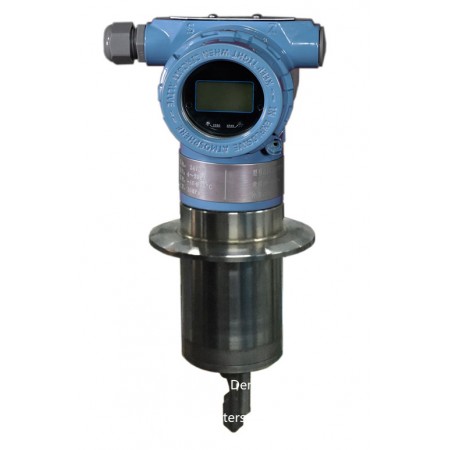


RBDM-C Low cost Insertion DENSITOMETER/CONCENTRATION METER operates on the vibrating element principle, the element in this case being a tuning fork structure that is immersed in the liquid being measured. The tuning fork is excited into oscillation by a piezoelectric device internally, secured at the root of one tine. The frequency of vibration is detected by a second piezoelectric device, which is secured in the root of the other tine.
The RBDM-C Insertion Liquid Densitometer is based on the tuning fork technology. Fluid density is determined directly from the resonant frequency of the tuning fork immersed in the fluid.
A temperature sensor (PRT) is also fitted within the transmitter to indicate the operating temperature. It is an all-welded sensor that is designed for insertion into a pipeline, open tank, or closed tank.
The RBDM-C Low cost Insertion DENSITOMETER Features:
The RBDM-C Low cost Insertion DENSITOMETER Specification:
|
Technical parameter |
||
|
Output signal: |
Output signal: 4~20mA |
|
|
Power supply: |
24VDC (Don’t connect external resistor or serial PLC!) |
|
|
Concentration range: |
0-100%(20℃) |
|
|
Density range: |
0~3g/ml; |
|
|
Accuracy |
Density: |
0.002 g/ml , resolution: 0.0001, repeatability: 0.0005 |
|
Concentration |
0.5% , resolution:0.1, repeatability:0.2 |
|
|
Explosion-proof Class |
isolating explosion ExdII BT6 |
|
|
Maximum pressure |
<1Mpa |
|
|
Medium temperature |
0~60℃(liquid state) |
|
|
Ambient temperature |
-40~85℃ |
|
|
IP Class |
IP65 |
|
|
Viscosity of medium |
<1500mpa·s |
|
|
Physical properties |
||
|
Electrical interface |
M20X1.5 |
|
|
Process interface |
DN20~80 Flanges |
|
|
Wetted parts |
316 stainless steel |
|
The RBDM-C Low cost Insertion DENSITOMETER Model Selection:
The RBDM-C Low cost Insertion DENSITOMETER/CONCENTRATION METER is ideally suited to applications where continuous, real-time measurement of density is required. For example, it can be used in process control where density is the primary control
parameter for the end product, or is an indicator of some other quality control parameter such as % solids, or % concentration.
Some Typical applications are:
Magmeters
Ultrassonic Flow Meter
Coriolis Mass Flow Meter
Other Flow Instrument